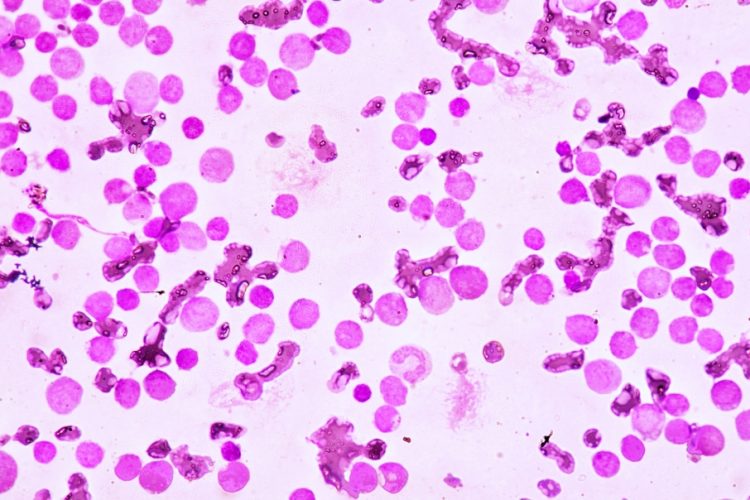CRISPR screening tool exposes new leukaemia drug target
Posted: 29 September 2021 | Anna Begley (Drug Target Review) | No comments yet
A CRISPR screening tool identified a new target for acute myeloid leukaemia with fewer side effects than current approaches.


A team at the University of Pennsylvania, US, have used a CRISPR-based screening tool to uncover a new therapeutic target to treat acute myeloid leukaemia (AML) that has the potential to leave patients with fewer side effects than current approaches.
The researchers used CRISPR to precisely disrupt the domain function of proteins in cancer cells, map their molecular functions and modify them to use in mouse models. They found that inhibiting the epigenetic reader function of a regulatory protein called ZMYND8 in mice left them with smaller tumours and better survival.
Discover how researchers identified a novel genomic marker of childhood leukaemia – READ HERE
“We have discovered that cancer cells in patients with AML rely heavily on ZMYND8 and thanks to a sophisticated CRISPR-based screening approach, we pinpointed the exact ‘druggable pocket’ to target,” commented senior author Junwei Shi.
Biomarkers are redefining how precision therapies are discovered, validated and delivered.
This exclusive expert-led report reveals how leading teams are using biomarker science to drive faster insights, cleaner data and more targeted treatments – from discovery to diagnostics.
Inside the report:
- How leading organisations are reshaping strategy with biomarker-led approaches
- Better tools for real-time decision-making – turning complex data into faster insights
- Global standardisation and assay sensitivity – what it takes to scale across networks
Discover how biomarker science is addressing the biggest hurdles in drug discovery, translational research and precision medicine – access your free copy today
“The findings suggest that delivering drug inhibitors against ZMYND8 could disrupt the AML vulnerable gene regulation circuits,” added Zhendong Cao, a PhD student investigator in Shi’s lab. “It is an opportunity to develop better precision medicine compounds than current treatments to treat this blood cancer – which we are currently working on right now.”
The researchers also found a biomarker – the expression level or the epigenetic status of the gene IRF8 from AML cells – to predict the sensitivity of cancer cells to a ZMYND8 inhibitor. Furthermore, the researchers validated the high expression of IRF8 and presence of IRF8 enhancer DNA element using blood samples from patients the University of Pennsylvania Medical School to support their finding.
“Many genetic and epigenetic alterations have been identified in cancer but few are actionable targets,” explained co-author Professor Shelley Berger. “CRISPR revealed here, for the time, an unexpected epigenetic-linked molecular circuity that AML is dependent on and one that we can potentially manipulate. It opens a new door toward better treatments for these patients using next-generation epigenetic inhibitors.”
The study was published in Molecular Cell.
Related topics
Biomarkers, CRISPR, Drug Targets, Epigenetics, Genomics, In Vivo, Molecular Targets, Oncology, Protein, Small Molecules, Target Molecule, Therapeutics
Related conditions
acute myeloid leukaemia (AML)
Related organisations
Pennsylvania University
Related people
Dr Junwei Shi, Professor Shelley Berger, Zhendong Cao








